Abstract
Antibiotic prophylaxis for surgery has appeared indicated whenever likelihood of infection is great or consequences of such are catastrophic. For better clarification, a prospective, randomized, double-blind study was run on 400 patients undergoing elective gastric, biliary, and colonic operations. There were four treatment categories, with antibiotic being instituted 12 hours preoperatively, just prior to operation, after operation, or not at all. During operation, samples of blood, viscera, muscle, and fat were taken for determination of antibiotic concentration. Both aerobic and anareobic cultures were also taken of any viscus entered, peritoneal cavity, and incision. Similar cultures were run on all postoperative infections. Results demonstrated that the incidence of wound infection could be reduced significantly by the preoperative administration of antibiotic in operations on the stomach (22% to 4%), on the biliary tract (11% to 2%), and large bowel (16% to 6%). Less impressive results were obtained for peritoneal sepsis. Initiation of antibiotic postoperatively gave an almost identical infection rate as if antibiotic had not been given (15% and 16%, respectively).
Full text
PDF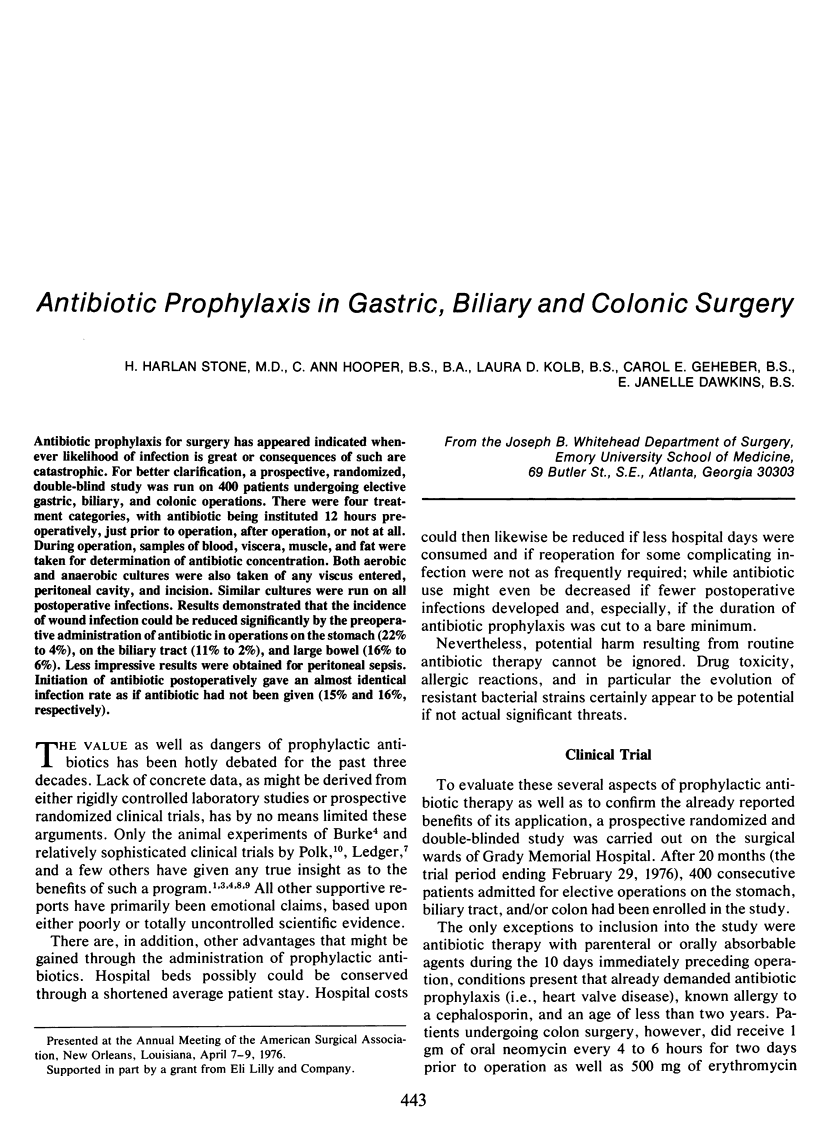
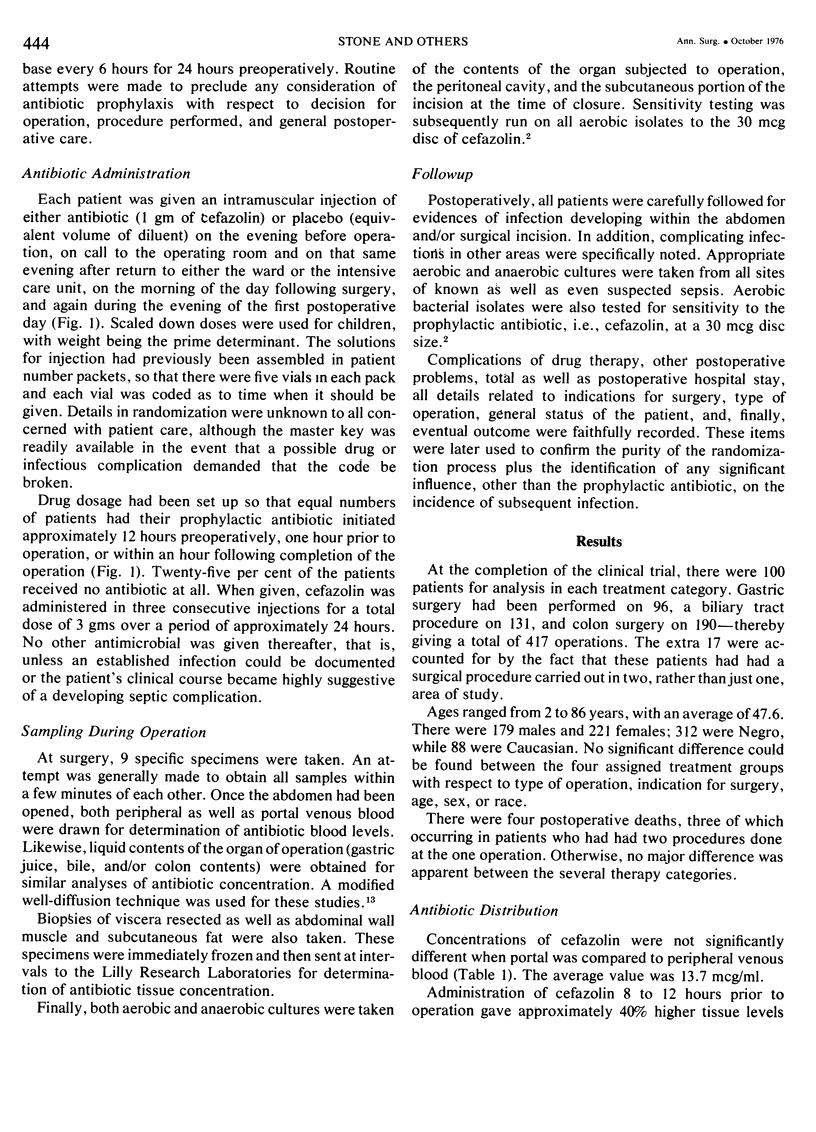
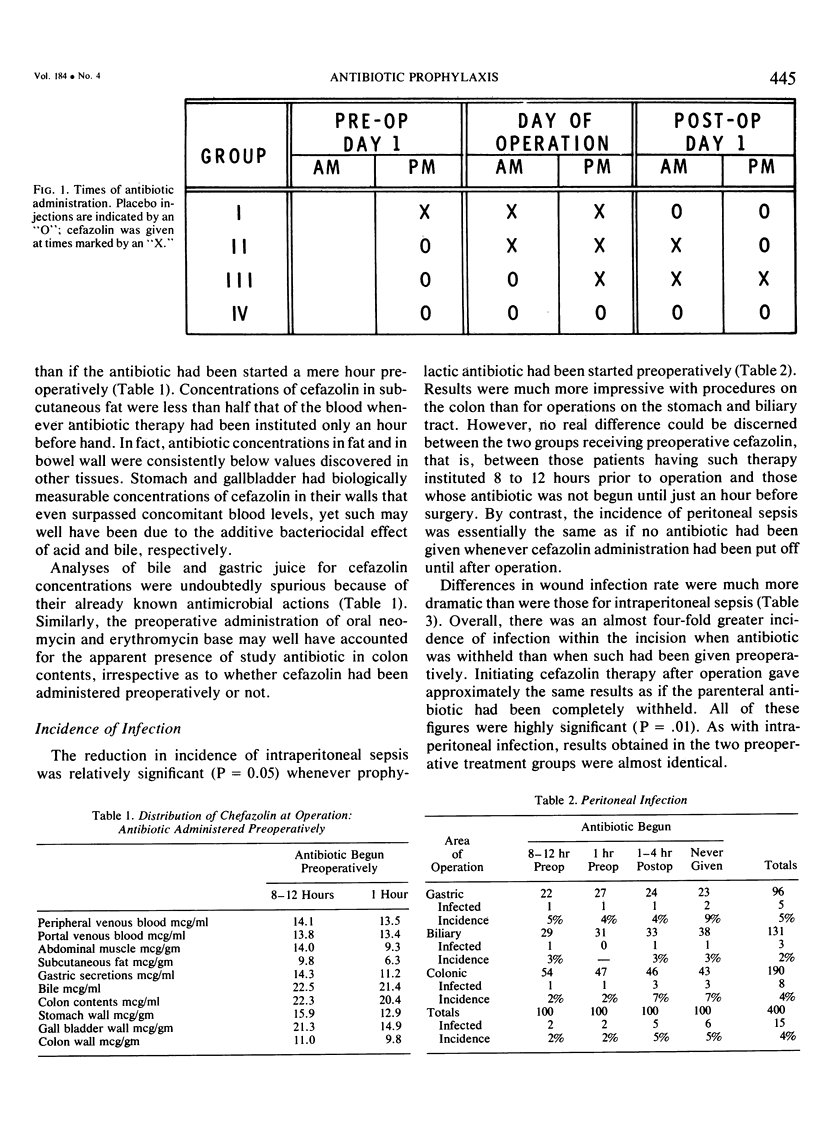
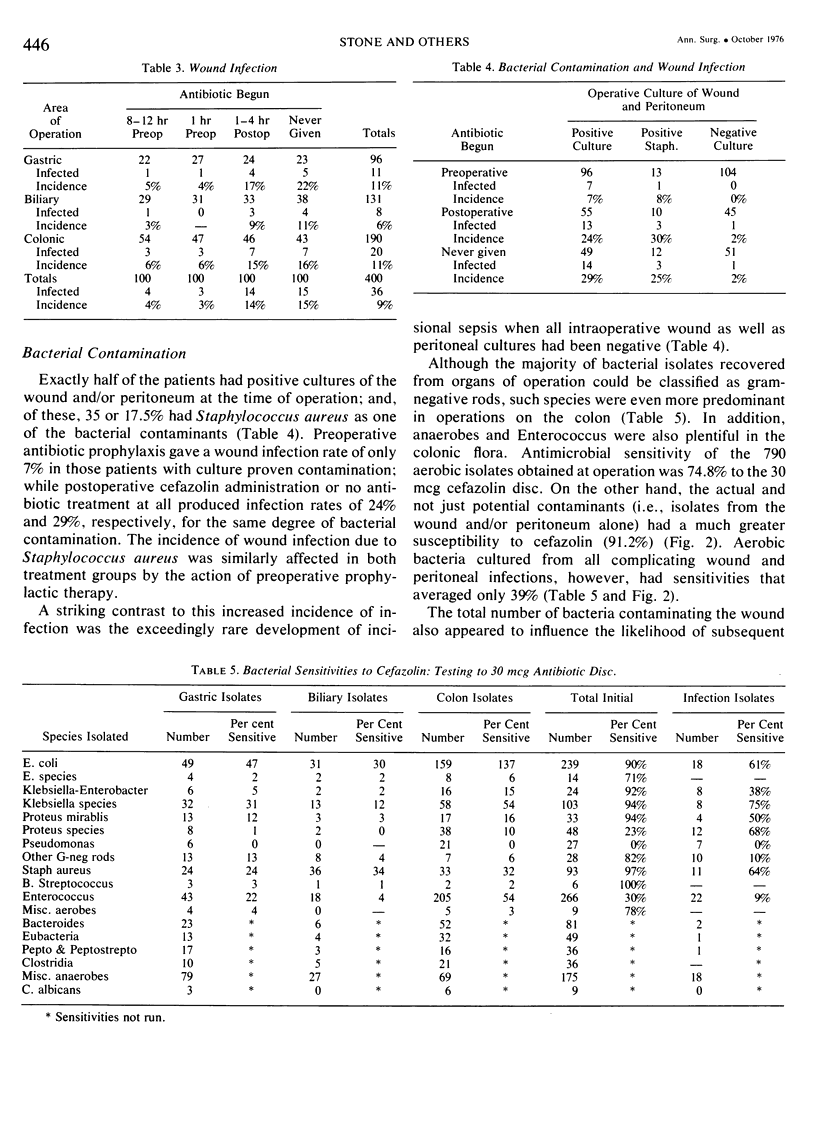
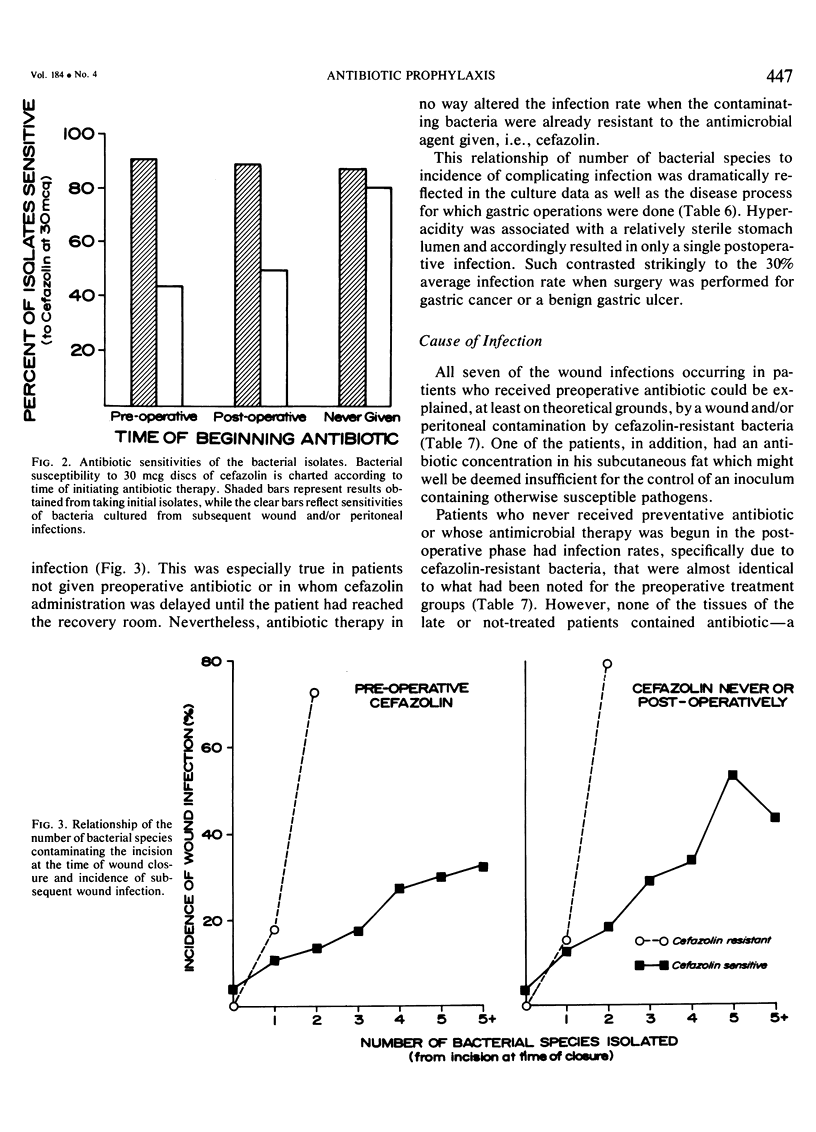
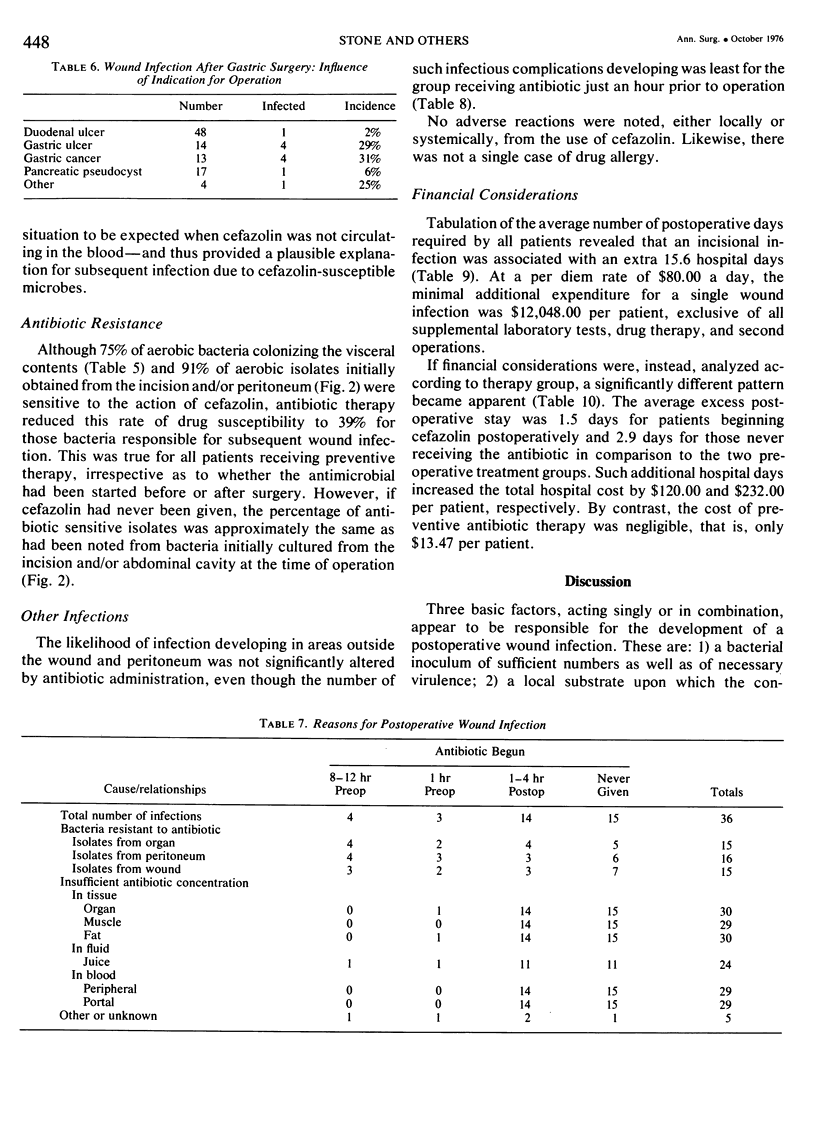
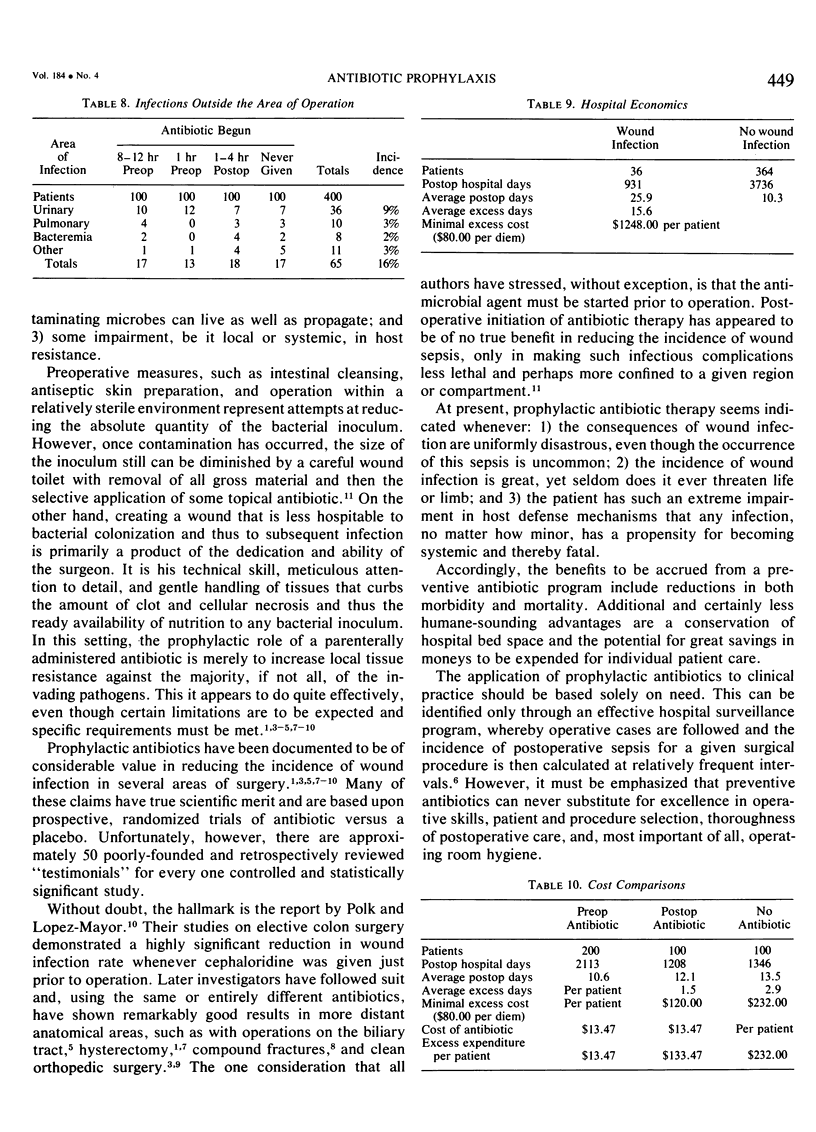
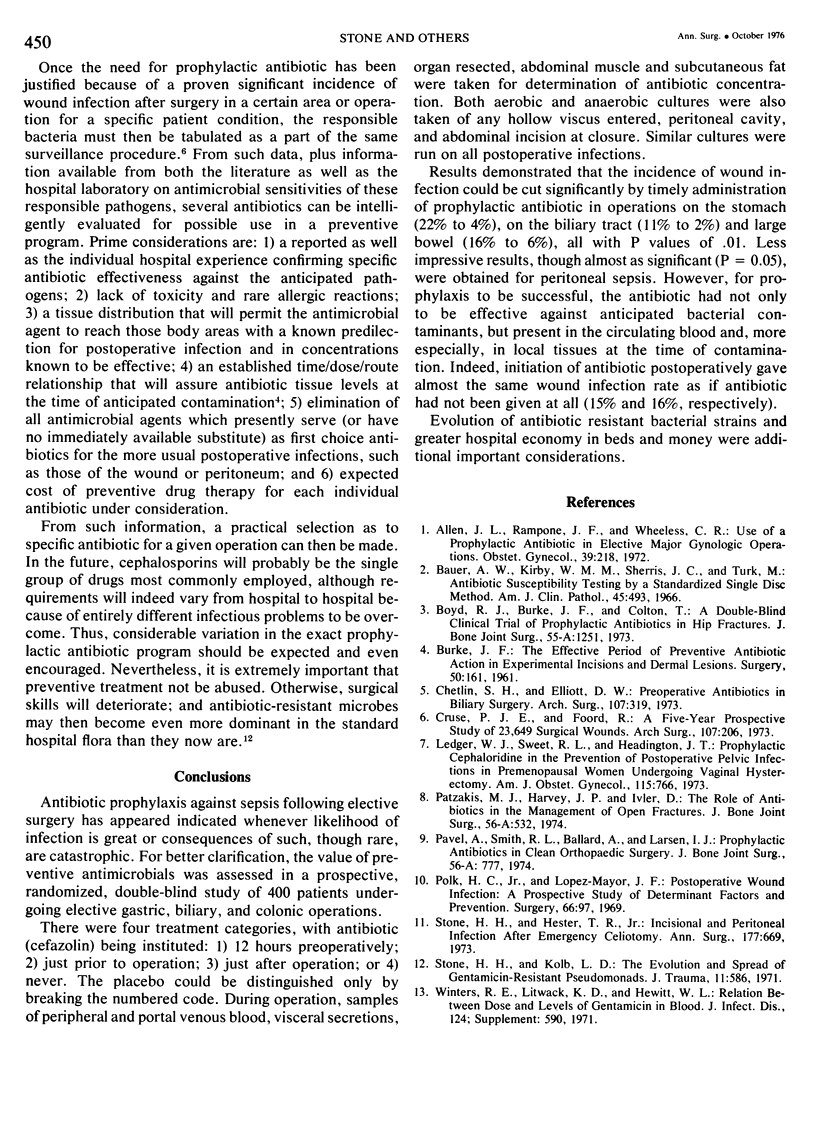
Selected References
These references are in PubMed. This may not be the complete list of references from this article.
- Allen J. L., Rampone J. F., Wheeless C. R. Use of a prophylactic antibiotic in elective major gynecologic operations. Obstet Gynecol. 1972 Feb;39(2):218–224. [PubMed] [Google Scholar]
- Bauer A. W., Kirby W. M., Sherris J. C., Turck M. Antibiotic susceptibility testing by a standardized single disk method. Am J Clin Pathol. 1966 Apr;45(4):493–496. [PubMed] [Google Scholar]
- Boyd R. J., Burke J. F., Colton T. A double-blind clinical trial of prophylactic antibiotics in hip fractures. J Bone Joint Surg Am. 1973 Sep;55(6):1251–1258. [PubMed] [Google Scholar]
- Burke J. F. The effective period of preventive antibiotic action in experimental incisions and dermal lesions. Surgery. 1961 Jul;50:161–168. [PubMed] [Google Scholar]
- Chetlin S. H., Elliott D. W. Preoperative antibiotics in biliary surgery. Arch Surg. 1973 Aug;107(2):319–323. doi: 10.1001/archsurg.1973.01350200179037. [DOI] [PubMed] [Google Scholar]
- Cruse P. J., Foord R. A five-year prospective study of 23,649 surgical wounds. Arch Surg. 1973 Aug;107(2):206–210. doi: 10.1001/archsurg.1973.01350200078018. [DOI] [PubMed] [Google Scholar]
- Ledger W. J., Sweet R. L., Headington J. T. Prophylactic cephaloridine in the prevention of postoperative pelvic infections in premenopausal women undergoing vaginal hysterectomy. Am J Obstet Gynecol. 1973 Mar 15;115(6):766–774. doi: 10.1016/0002-9378(73)90518-8. [DOI] [PubMed] [Google Scholar]
- Patzakis M. J., Harvey J. P., Jr, Ivler D. The role of antibiotics in the management of open fractures. J Bone Joint Surg Am. 1974 Apr;56(3):532–541. [PubMed] [Google Scholar]
- Pavel A., Smith R. L., Ballard A., Larsen I. J. Prophylactic antibiotics in clean orthopaedic surgery. J Bone Joint Surg Am. 1974 Jun;56(4):777–782. [PubMed] [Google Scholar]
- Polk H. C., Jr, Lopez-Mayor J. F. Postoperative wound infection: a prospective study of determinant factors and prevention. Surgery. 1969 Jul;66(1):97–103. [PubMed] [Google Scholar]
- Stone H. H., Hester T. R., Jr Incisional and peritoneal infection after emergency celiotomy. Ann Surg. 1973 Jun;177(6):669–678. doi: 10.1097/00000658-197306000-00005. [DOI] [PMC free article] [PubMed] [Google Scholar]
- Stone H. H., Kolb L. D. The evolution and spread of gentamicin-resistant Pseudomonads. J Trauma. 1971 Jul;11(7):586–589. doi: 10.1097/00005373-197107000-00009. [DOI] [PubMed] [Google Scholar]


